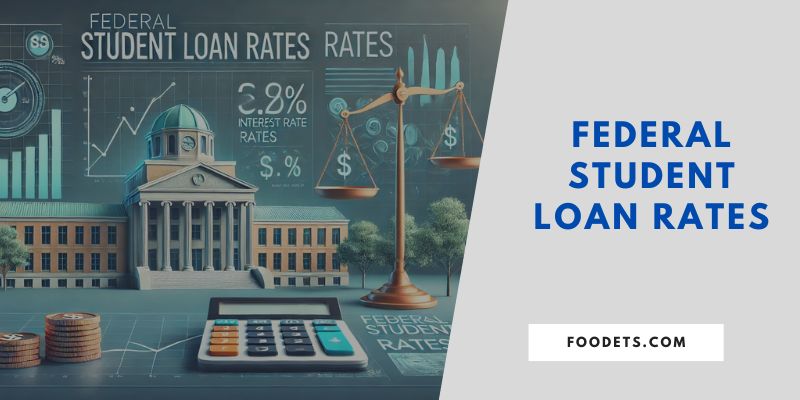Introduction: My Journey with Student Loans
I remember when my cousin called me. She was nervous. “How do I start?” she asked. She needed student loans but didn’t understand interest rates. Her parents were confused too.
Luckily, I knew how loans worked. I explained the basics. We talked about interest rates, saving money, and repayment plans. She felt better. Later, she told me my advice saved her thousands of dollars.
If you or your child need student loans, don’t worry. I’ll make this easy to understand.

How Are Federal Student Loan Rates Set?
Federal loan rates don’t depend on credit scores. Instead, the U.S. government sets them each year. Here’s how:
- Congress Makes the Rules – Lawmakers decide how rates work.
- Rates Follow the Economy – Loan rates are based on Treasury notes. If those go up, so do student loan rates.
- Loan Type Affects the Rate – Undergrads, grads, and parents all get different rates.
New rates apply every July 1. Once you take a loan, your rate stays the same for life.
Current Federal Student Loan Rates
Here are today’s rates:
- Direct Subsidized Loans (Undergrads) – For students with financial need. Rate: X%.
- Direct Unsubsidized Loans (Undergrads) – For all students. Rate: X%.
- Direct Unsubsidized Loans (Grad Students) – Higher rates than undergrads. Rate: X%.
- Direct PLUS Loans (Parents & Grad Students) – Highest rate. Rate: X%.
Rates change each year. If you take loans for different years, you may have different rates.
Fixed vs. Variable Interest Rates
Federal loans have fixed rates. That means your rate never changes.
Why is this good?
- No Surprises – Your payment stays the same.
- Protection from Rising Rates – Even if new loans get more expensive, yours won’t.
- Easier Planning – Fixed rates work well with repayment programs.
Private loans sometimes have variable rates. That means your rate can go up or down. Fixed rates are safer.
How to Save Money on Loan Interest
Want to pay less? Try these tips.
1. Pay Interest While in School
Unsubsidized loans start charging interest right away. If you pay just a little each month, you’ll save big later.
2. Consider Refinancing After Graduation
Once you have a job, you may get a lower rate by refinancing with a private lender. But be careful! You’ll lose federal benefits like loan forgiveness.
3. Pick the Right Repayment Plan
Federal loans have different payment plans. The Standard Plan pays off loans fastest. Income-driven plans adjust based on what you earn.
Loan Forgiveness & Income-Driven Repayment
Some borrowers get loan forgiveness. But interest still matters.
- Public Service Loan Forgiveness (PSLF) – If you work for the government or a nonprofit, you may get your loans forgiven after 10 years.
- Income-Driven Repayment (IDR) Plans – These plans lower your monthly payment. After 20–25 years, your loan may be forgiven. But interest keeps adding up.
How to Cut Interest in These Plans
- Pay extra when you can.
- See if you qualify for interest subsidies.
- Avoid delaying payments. Interest grows fast.
Mistakes to Avoid
Some borrowers lose money by making mistakes. Don’t be one of them.
1. Ignoring Interest While in School
Interest adds up fast. If you don’t pay it now, you’ll owe more later.
2. Not Understanding Capitalization
Unpaid interest gets added to your loan balance. This makes your loan grow even more.
3. Refinancing Without Knowing the Risks
Private lenders may offer lower rates. But you’ll lose federal protections like IDR and PSLF.
4. Taking Private Loans Too Soon
Federal loans usually have better terms. Use them first before looking at private loans.
How to Plan for the Future
Borrowing for college is a big decision. Here’s how to plan ahead:
- Estimate Costs – Look at tuition, fees, housing, and books. Try to borrow only what you need.
- Apply for Grants & Scholarships – Free money is always better than loans.
- Use Federal Loans First – They have better terms than private loans.
- Think About Your Career – Some jobs qualify for loan forgiveness. Others pay well and help you repay faster.
- Make a Budget – Know how much you’ll owe after graduation. Plan how to repay it.
Final Thoughts
Federal student loans can be confusing. But if you understand interest rates, you’ll save money.
Make smart choices. Pay attention to interest. Pick the best repayment plan. And always look for ways to cut costs.
Got questions? Talk to your school’s financial aid office or a money expert. Smart borrowing now means a better future later!
Additional Resources
- StudentAid.gov – Official federal loan info.
- NSLDS.ed.gov – Check your loan balance.
- Federal Repayment Calculator – See what you’ll owe each month.
The more you know, the better your future will be!